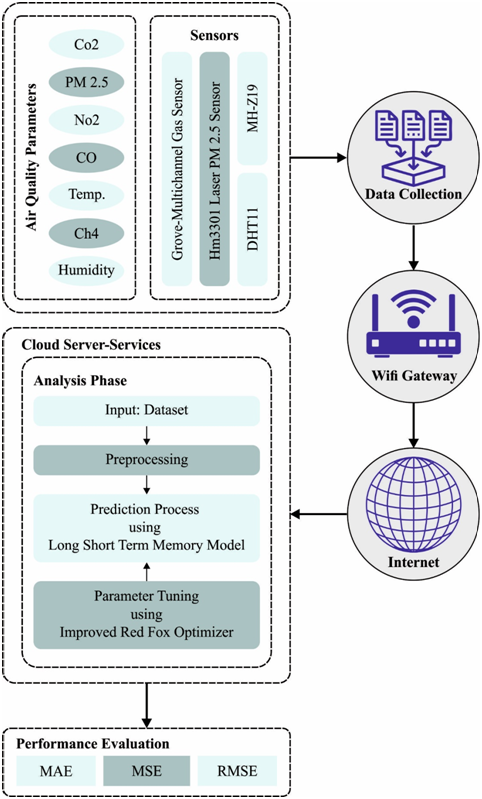
Air quality, radiation pollution, and water pollution were thekey featuresthat possess genuine challenges to the environment. Proper monitoring wasneededin such a way that the world couldaccomplish sustainable development, withkeeping a healthy society. Recently, environment monitoring is become a smart environment monitoring (SEM) scheme, with development of modern sensors and the advancements in the internet of things (IoT). IoT devices were mainly used in WSN for pollution control, vehicle marking, temperature control, and effective waste management. Consequently, modern method of environmental monitoring is called as SEM system, owing to usage of wireless sensors, IoT and AI.This paper leverages IoT devices for sustainable air pollution monitoring. The presented model derives an improved red fox optimizer with deep learning based air pollution monitoring system (IRFODL-APMS) using IoT devices. The presented IRFODL-APMS technique makes use of different IoT devices to collect data. Besides, the IRFODL-APMS model performs prediction process using deep learning based on long short term memory (LSTM). At last, IRFO technique is exploited as a hyperparameter tuning process of the LSTM model to accomplish enhanced prediction performance. The presented IRFODL-APMS model is simulated under distinct measures and the outcomes reported the enhanced predictive outcomes of the IRFODL-APMS approach over other existing models.
Total file downloads: 14